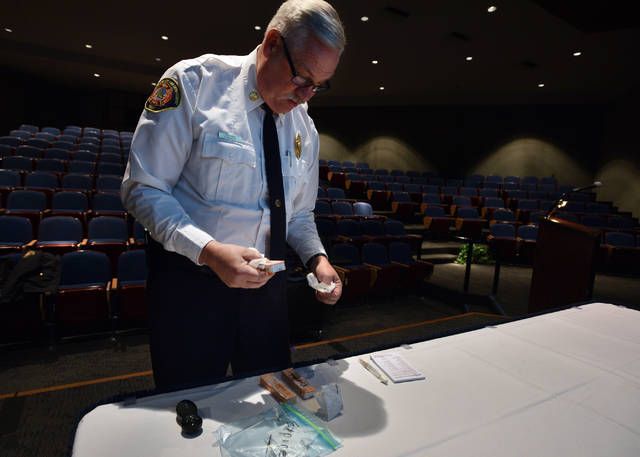Click here to subscribe today or Login.
NANTICOKE — The numbers told the tale, Wilkes-Barre City Fire Chief Jay Delaney said. Since Pennsylvania passed a 2014 law allowing first responders to administer naloxone to opioid overdose victims, the doses delivered annually in Wilkes-Barre have soared.
From March through December 2015, 158 doses of naloxone were administered. In 2016, it was 190. This year, it’s been 326.
Most troubling, Delaney said during a public presentation at Luzerne County Community College on Tuesday, responders had to administer the antidote two times in 59 cases, and had to administer three doses in 14 cases.
“That’s a sign of how potent the drugs they took are,” he said, noting that pushers are selling heroin laced with fentanyl and its variations, making it up to 6,000 times more potent than morphine.
People die from opioid overdose because the drug causes the heart to slow, the blood pressure to drop, and breathing to stop. Naloxone, also known as Narcan, can be administered safely by almost anyone through a nasal atomizer, and it works in just minutes. But if the drug lasts longer than the Narcan, the victim may need repeated doses of the life-saving drug.
Citing statistics from the National Institutes of Health, Delaney noted the opioid overdose epidemic clearly escalated from 2010 on, coinciding with a sharp increase in the prescription of legal opioids, and with a sharp decline in the street price of illegal opioids like heroin. The number of deaths from opioid overdose rose 248 percent since 2010, he noted.
Delaney listed the main signs of an opioid overdose: Slowed or stopped breath, slowed heartbeat, very small pupils, and extreme drowsiness. While naloxone can reverse the breathing and heart effects in a matter of minutes, many patients only have a few minutes between manifestation of such signs and death.
“When in doubt, we give them the naloxone,” said the chief.
Saving lives, he conceded, is only half the battle. The user is better off going to a hospital for observation and further treatment in case the drug overpowers the first dose of naloxone. And, of course, an addict needs long term treatment and therapy to overcome the addiction.
A certified paramedic since 1981, Delaney didn’t mince words about what he is seeing.
“There has never been a worse epidemic compared to what we’re facing now,” he said. “I truly believe that.”





